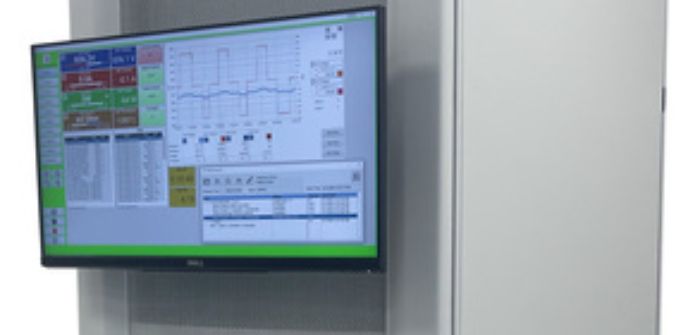The rapid increase in battery technology for electric vehicles requires constant evolution of the equipment needed to test them. Now, EA Elektro-Automatik of San Diego, California, has launched a compact, automated battery cycler and test system that it says will improve testing of higher power EV batteries.
Its 10300 Series ATE system can accommodate 300kW in a single 42U-high rack that needs 6.5ft2 of production floor space. Racks can be placed in parallel for up to 3.84MW of testing capability.
The new series offers 2000 V DC capacity for testing high-voltage battery packs and each rack can supply and sink up to 2,400A per rack with the system offering up to 30,720A total capacity. This facilitates battery pulse testing, which may require exponentially higher current than the battery AH rating.
As well as battery cycling, the turnkey solution can also test drive-cycle simulations and insulation resistance. The test system can control an environmental chamber and communicate with a battery management system through the CANbus interface and drag-and-drop software is all included.
“As consumers demand EV batteries with higher storage capacities, producers need test systems with higher power capability,” said Eric Turner, Americas director of EA Elektro-Automatik. “In addition, the new hydrogen fuel cells coming onto the market will require even more. Voltage levels as a result are increasing, in some cases power grid batteries need to be tested now at 1500V. The introduction of the 10300 Series now means there is a production battery test system that is finally capable of meeting emerging voltage and power demands.”
The 10300 Series ATE test system is based on EA Elektro-Automatik’s bidirectional power supply featuring SiC-based switching. It has the ability to return power to the grid with up to 96.5% efficiency and the company says its system slew rates are at least twice as fast as other systems.
In addition, the system’s bidirectional power supplies have true auto-ranging output for both sourcing and sinking. This enables a wider range of voltage and current, plus the ability to deliver and absorb full-rated power down to one third of the maximum rated voltage. This means the 10300 Series system can perform a cycling test without requiring interruption to allow the system to change range as battery pack voltage ramps up or down.


